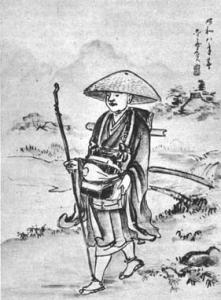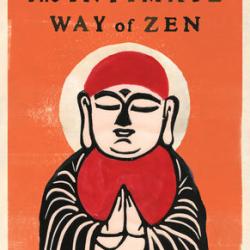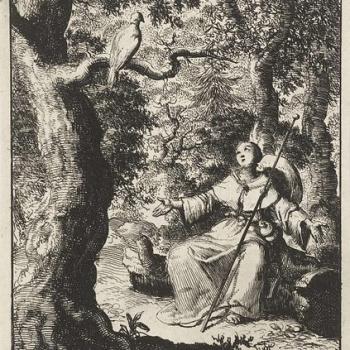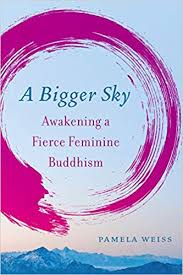Today Gensan, a dear friend is ordaining as an unsui, a person of “clouds and water.” It is a type of ordination unique to our Japanese Zen inheritance, no longer based in the Vinaya, Buddhism’s ancient monastic codes, but rooted in ten, and for the Soto school within which this ordination is happening, sixteen precepts or vows.
It is part of a still evolving ordination system. When ten precept ordination was introduced into Japan in the ninth century through the efforts of the Tendai monk Saicho, this ordination was understood as a full monastic ordination for the newly imported Tendai school which had been largely blocked from access to the traditional ordination platforms.
Within Japan it would in time become the only ordination model, slightly modified among the schools, but used by all Japanese Buddhists. However it was always confused in the minds of continental Buddhism, as the ten precepts were derived from the Chinese Bodhisattva Precepts, and there taken by lay people and monastics alike. With that for many outside of Japan this ordination system is not recognized.
And then it began a process of shifting. The reasons were many, but among them was the rise of the temple system. Where after a period of monastic training single monks would take up residency in a network of many thousands of temples across the Japanese islands. While a small percentage of Bodhisattva monks would spend the whole of their lives within the cloister of practice, the vast majority would eventually move out into one of these temples and among the people.
In the thirteenth century the Shin monk Shinran Shonin openly married, declaring his ordination was to something “neither monk nor lay person.” With this a kind of ordination that can crudely be compared to the differences between Roman Catholic and Anglican priesthood emerged. Japanese temple priests settled into their communities, performing the rites of religion on behalf of the people, but otherwise it could be hard to distinguish them from the rest of the community. Outside of the Shin school what exactly was happening was shrouded with a veneer of hypocrisy, where the language about ordination continued to be monastic, but in practice many, in time, no doubt most temple priests had concubines and children.
Finally as part of the many reforms of the Meiji era, Buddhist priests were legally allowed to grow their hair, eat meat, and, marry. The final testimony to the hypocrisy before was how within five years the vast majority of Buddhist monks married.
It is still complicated. In Japan most temples still do not have family accommodations, and the particular work ethic of Japanese culture is in full force, creating a hard divide between the priestly life and one’s family life. And for women it is doubly difficult. In theory fully equal, in practice, institutional equality is elusive. That said, something very rich and potentially useful for us in the West has emerged.
Still, the terminology for these religious professionals continues to be monastic. A Japanese priest comes west and their preferred self-reference is as a monk. And that term is still in common use among western ordained practitioners, even when they have a spouse and children. So, we still have work to do.
In Buddhist history, probably from its foundations, certainly from very early the sangha, the community was considered four-fold: monks, nuns, laymen, and laywomen. Those of us who practice Zen in the West, who derive our disciplines and traditions from Japan, and that continues to be the majority of us who practice Zen here; now have an emerging three-fold sangha: monastics, priests, and lay people.
Untangling these distinctions, supporting, and even celebrating each is probably the great project ahead for the next several generations. If, of course, this style of Zen, or even Zen itself, survives here. But I believe this project is critical. I should say the two fundamental gifts of Zen come west, an understanding of awakening and the disciplines of Zen meditation. However, it is so important that we understand the three-fold division. Because I do not believe those two precious gifts of our subtle understanding of awakening and our core practices can survive on their own. They need the community.
I’ve called the network of support a container. But that isn’t right. This three-fold way is vastly more than a container. It is the shape of a dharma family, it is the foundation of a way of life and even of a culture of awakening. So, each part is critical. And, that said, I think as the inheritors of the principal way of preserving and transmitting our way, the priests have special obligations. first, to the twin ways of awakening and practice. But, beyond that to discovering the mysteries of “married monasticism,” of a way of life that is at once disciplined and embedded within family and community. And also what distinguishes priestly practice and lay practice when all are seen as genuinely, not merely rhetorically equal? Understanding this way. Practicing this way. Sharing the whole way.
So…
Here we are. Looking at another person who has already devoted years to practice. Who seeks the mind of the great way. And, who now takes the vows of a clouds and water person, of an unsui, of a Zen priest.
The way forward is complicated. We are still seeking to understand all the nuances. What is a married monk? What is a priest? What will his relationships look like going forward? Gensan, what will your relationships look like going forward?
So…
Along with all that, how will this ordination further that larger project of liberating the human heart, and with that creating a Zen Buddhist community here on Turtle Island and throughout the west?
Responsibilities. Joys. Sorrows. Failures. And, successes. All of these things hang in the balance.
So…
So, Gensan, blessings on you and those with whom you live and work. Blessings on your questions. Blessings on your finding. And. Thank you for taking these vows for yourself and for all of us.
Endless bows,
Your friend,
Myoun













